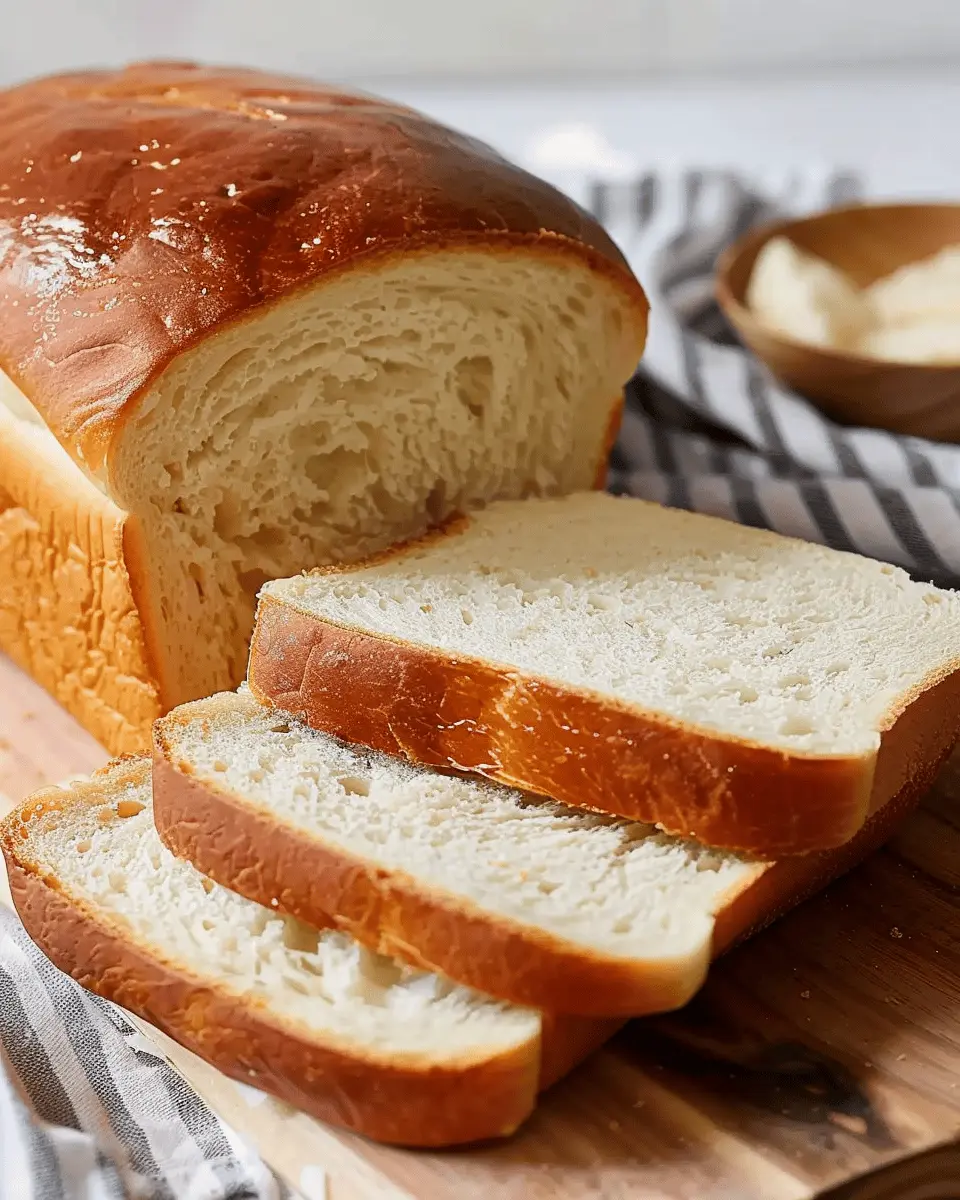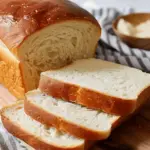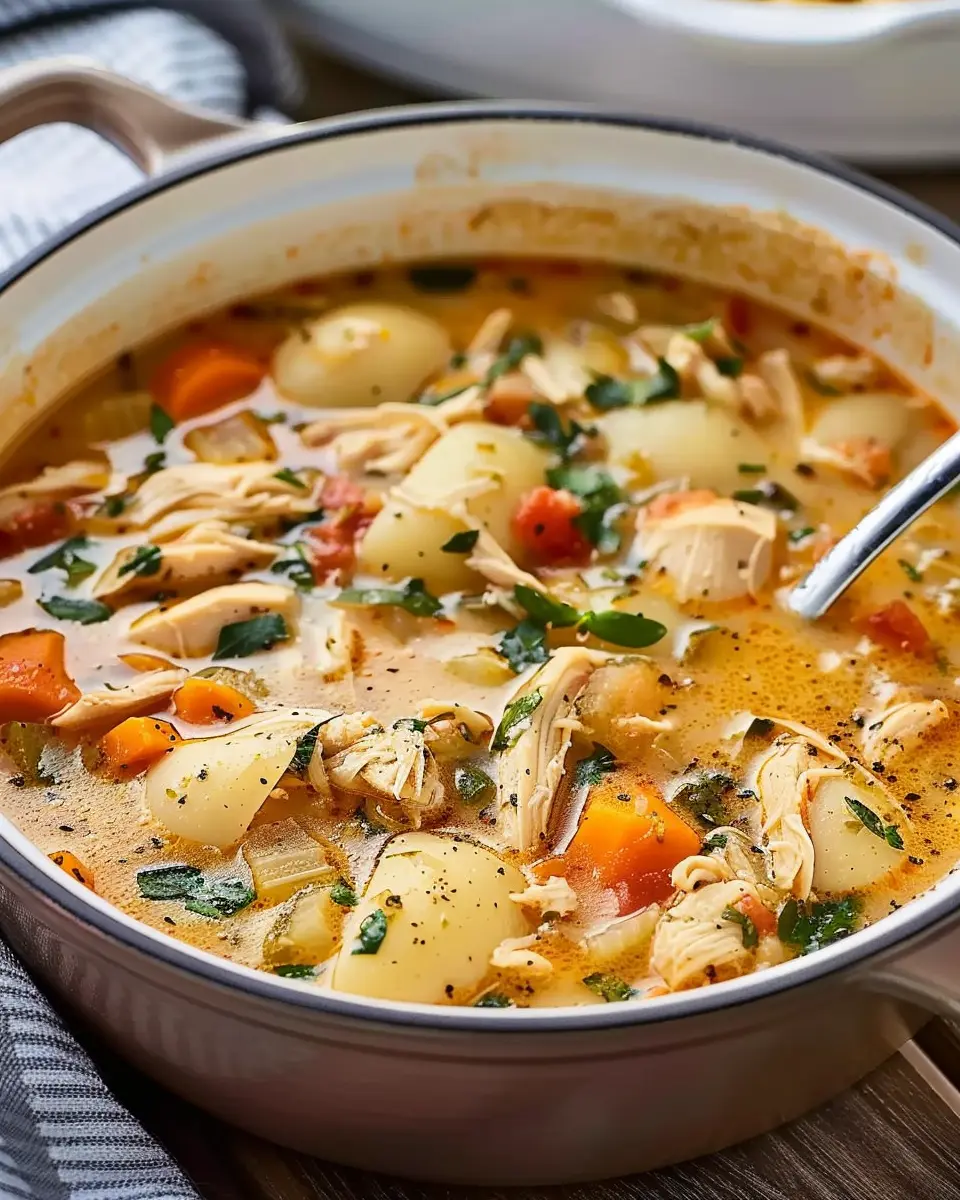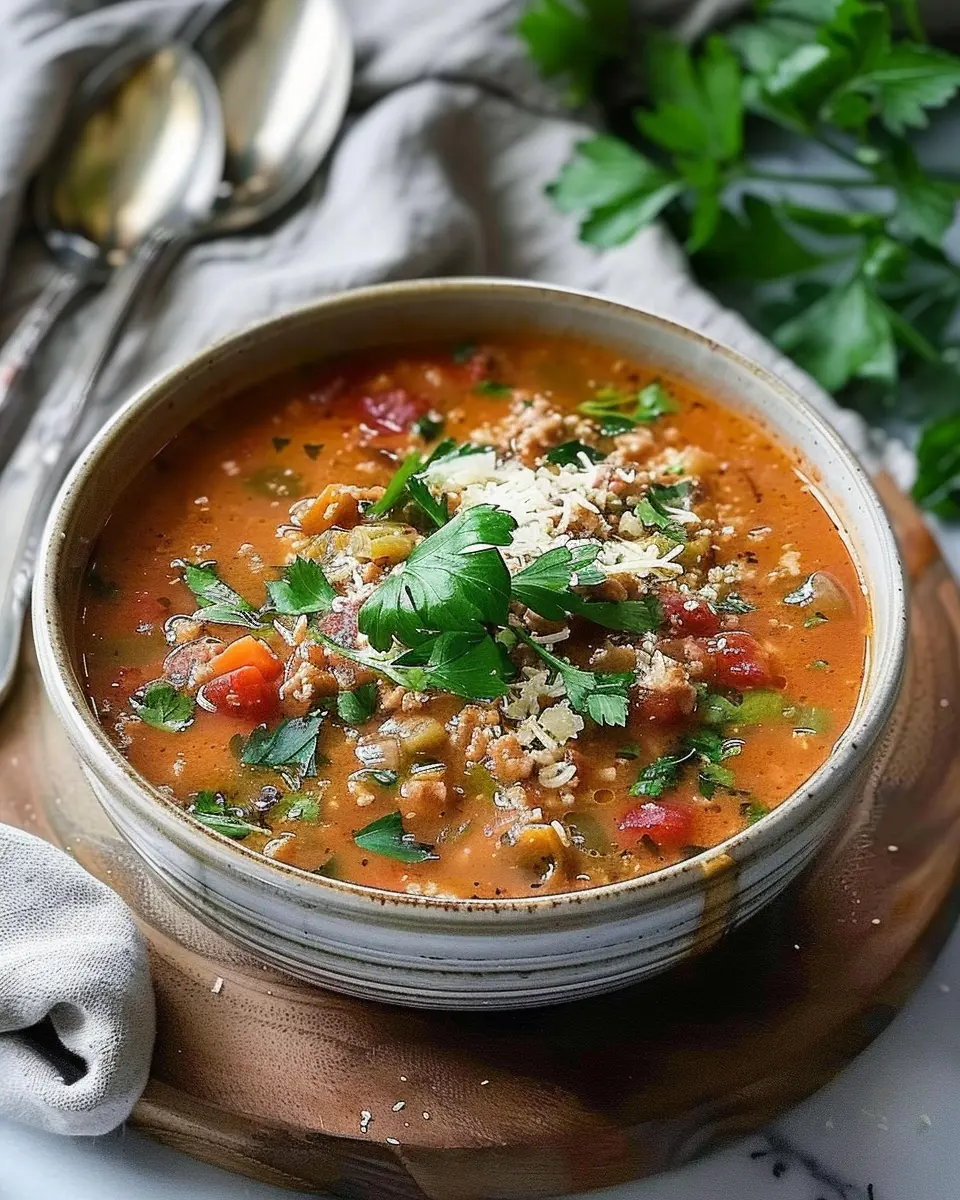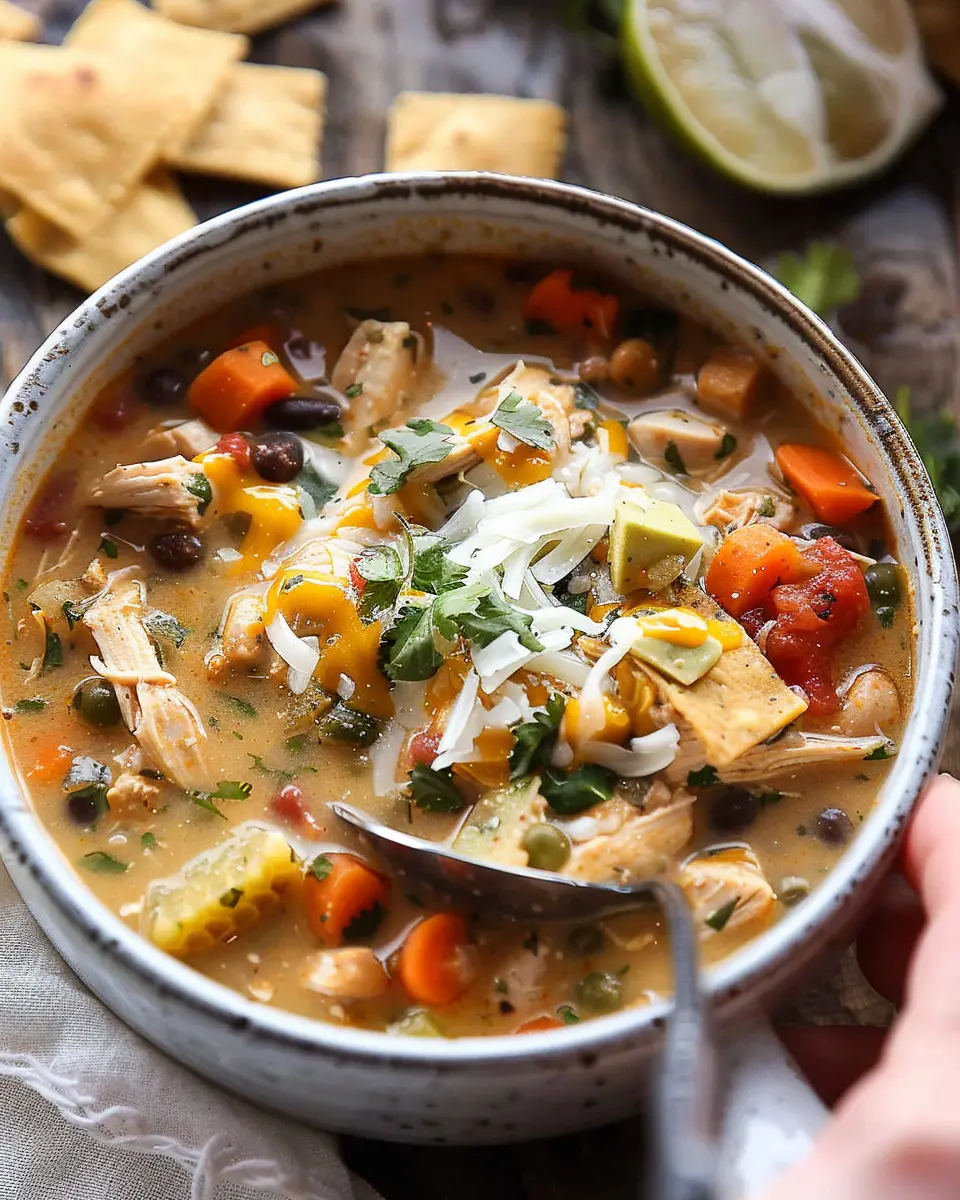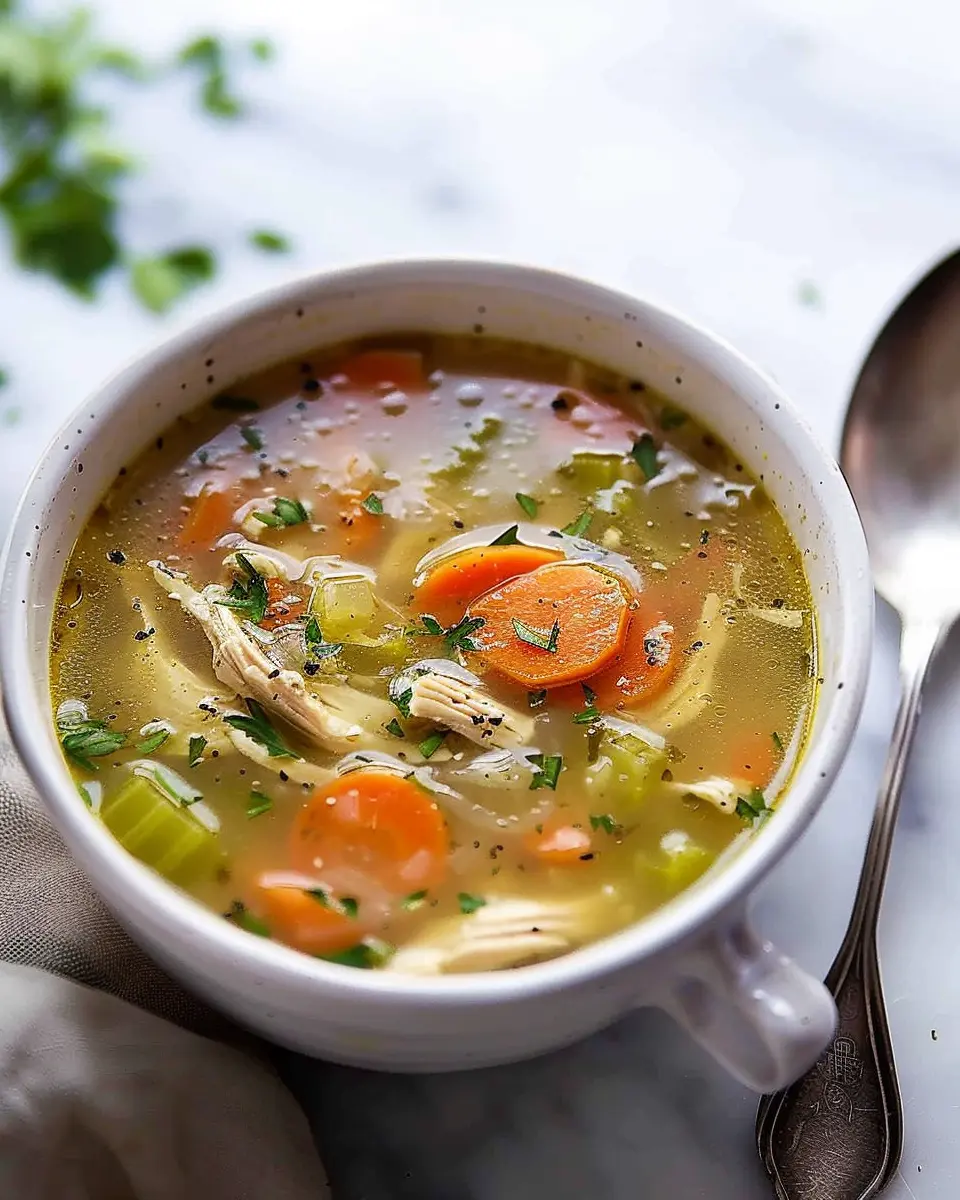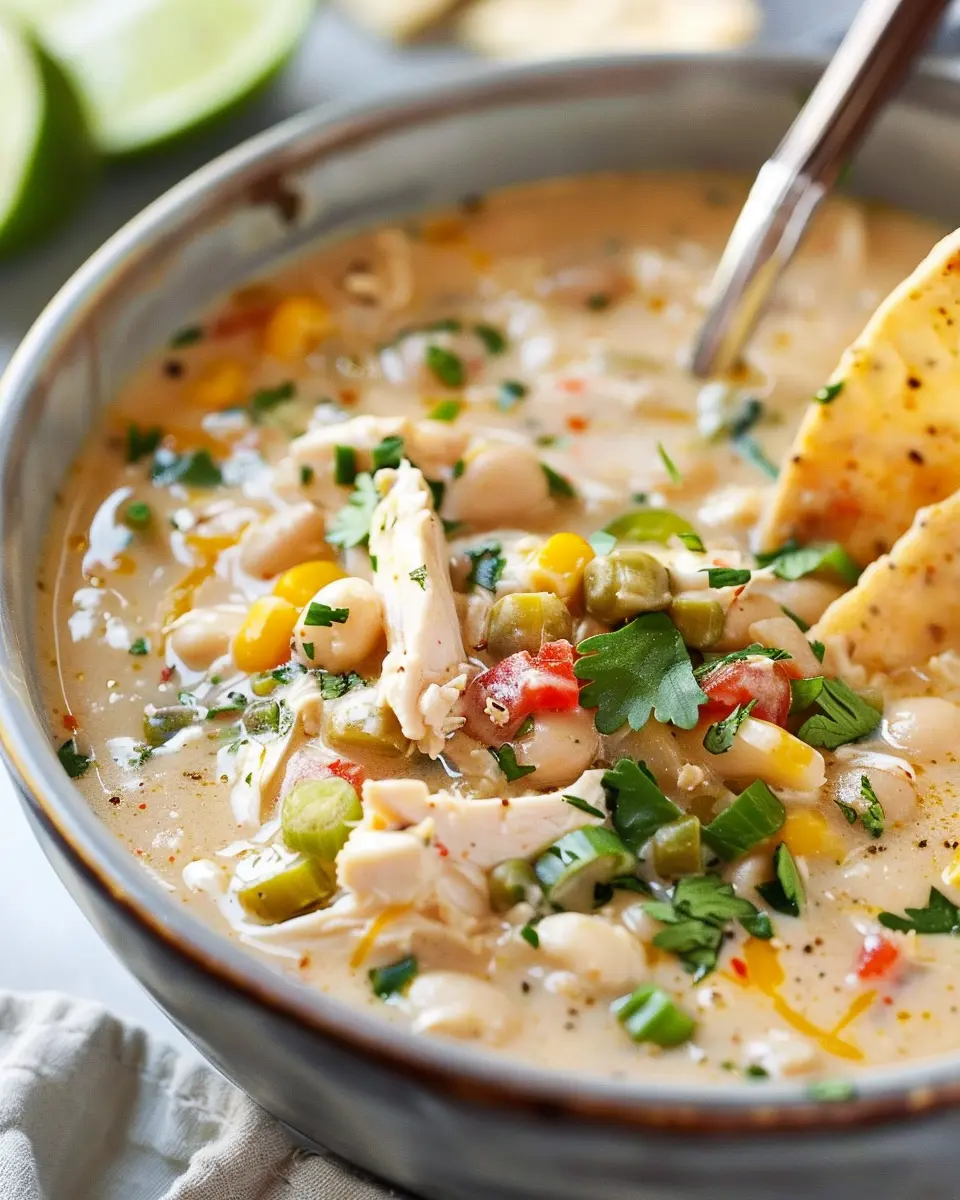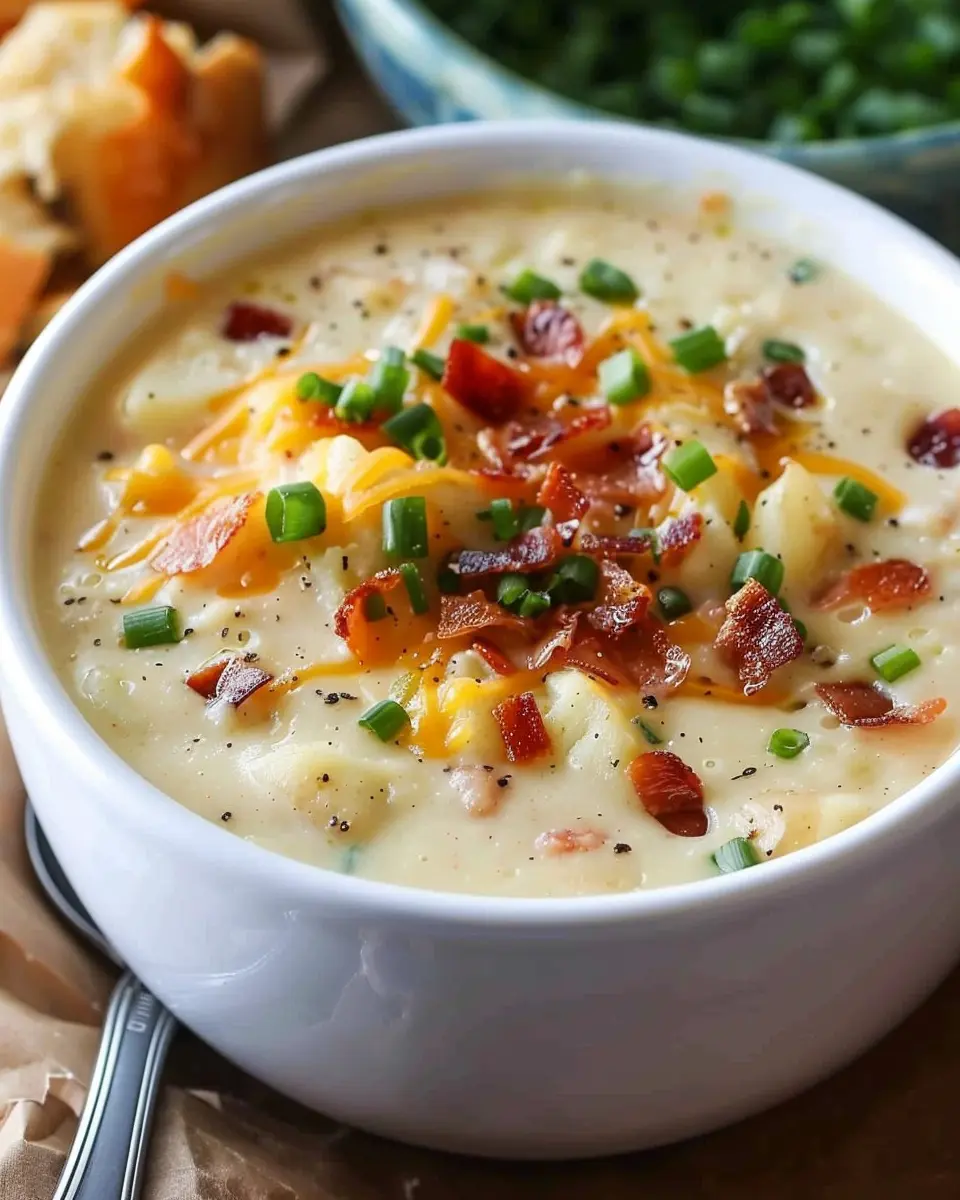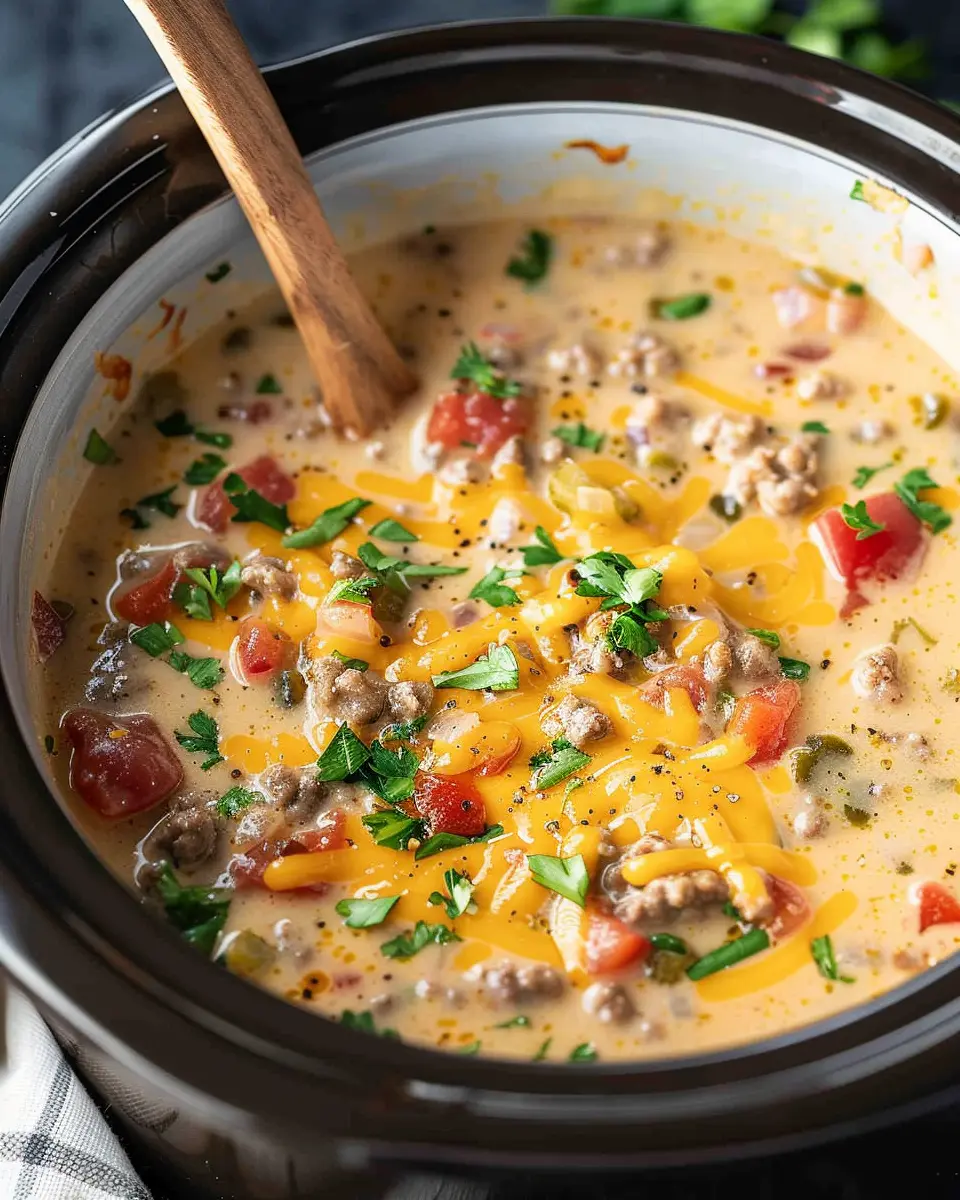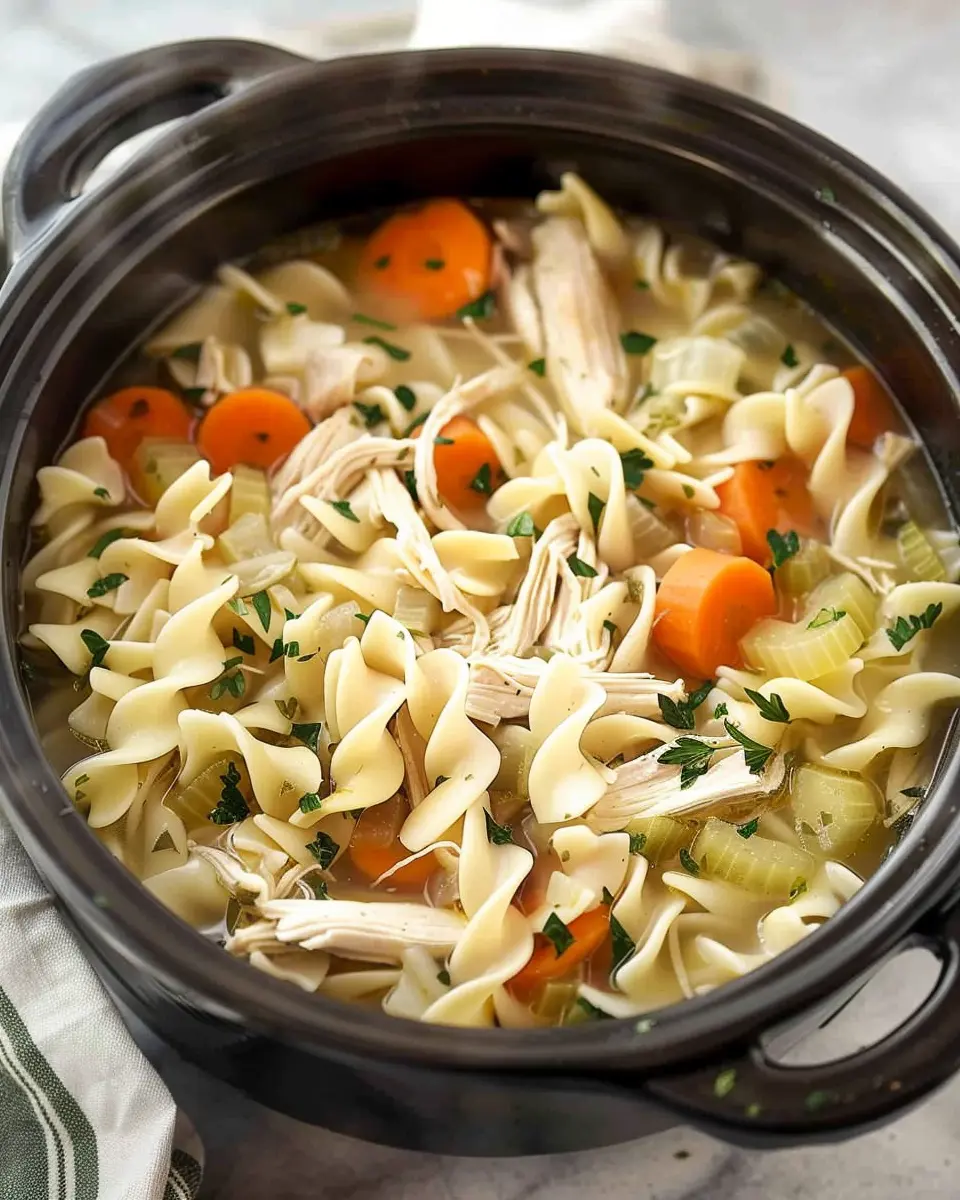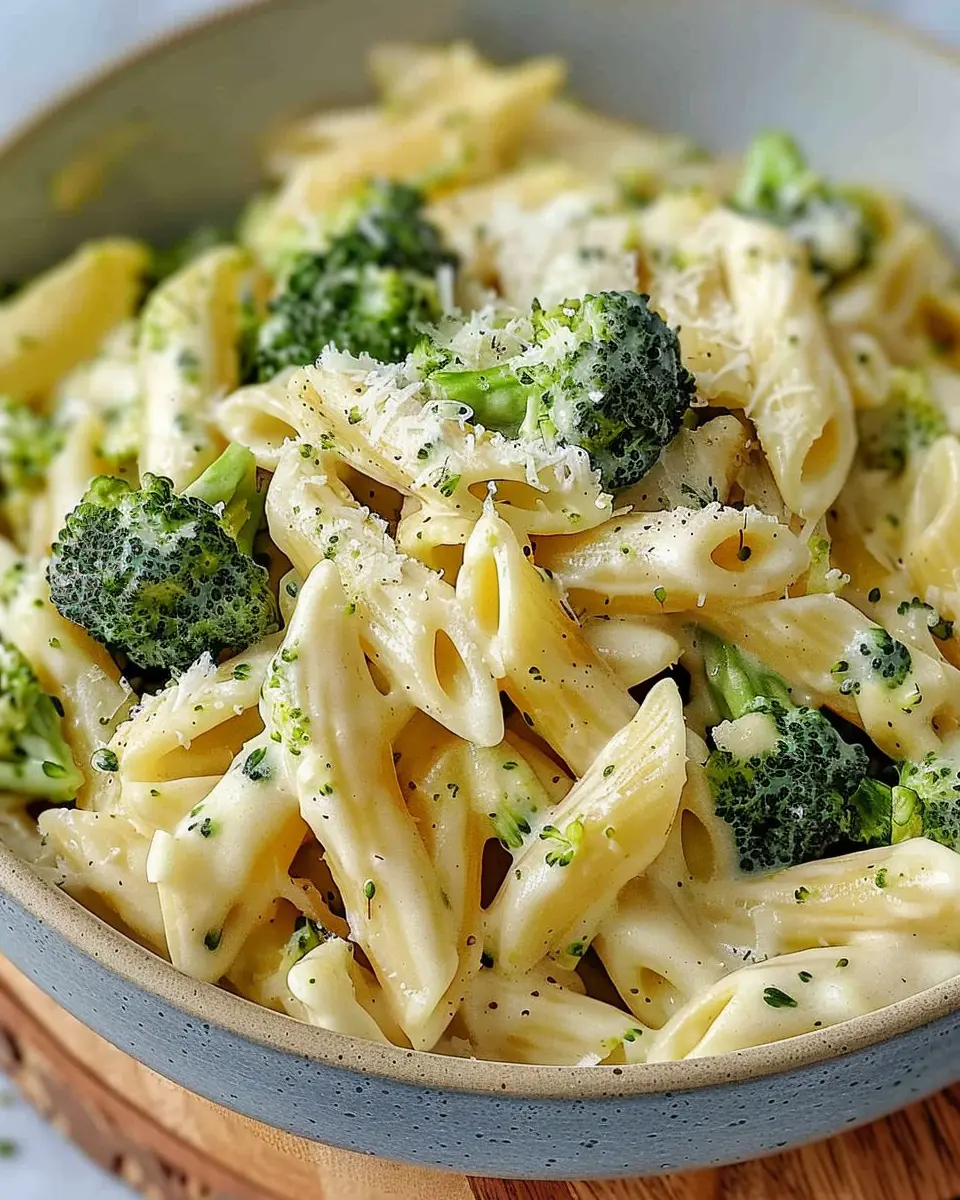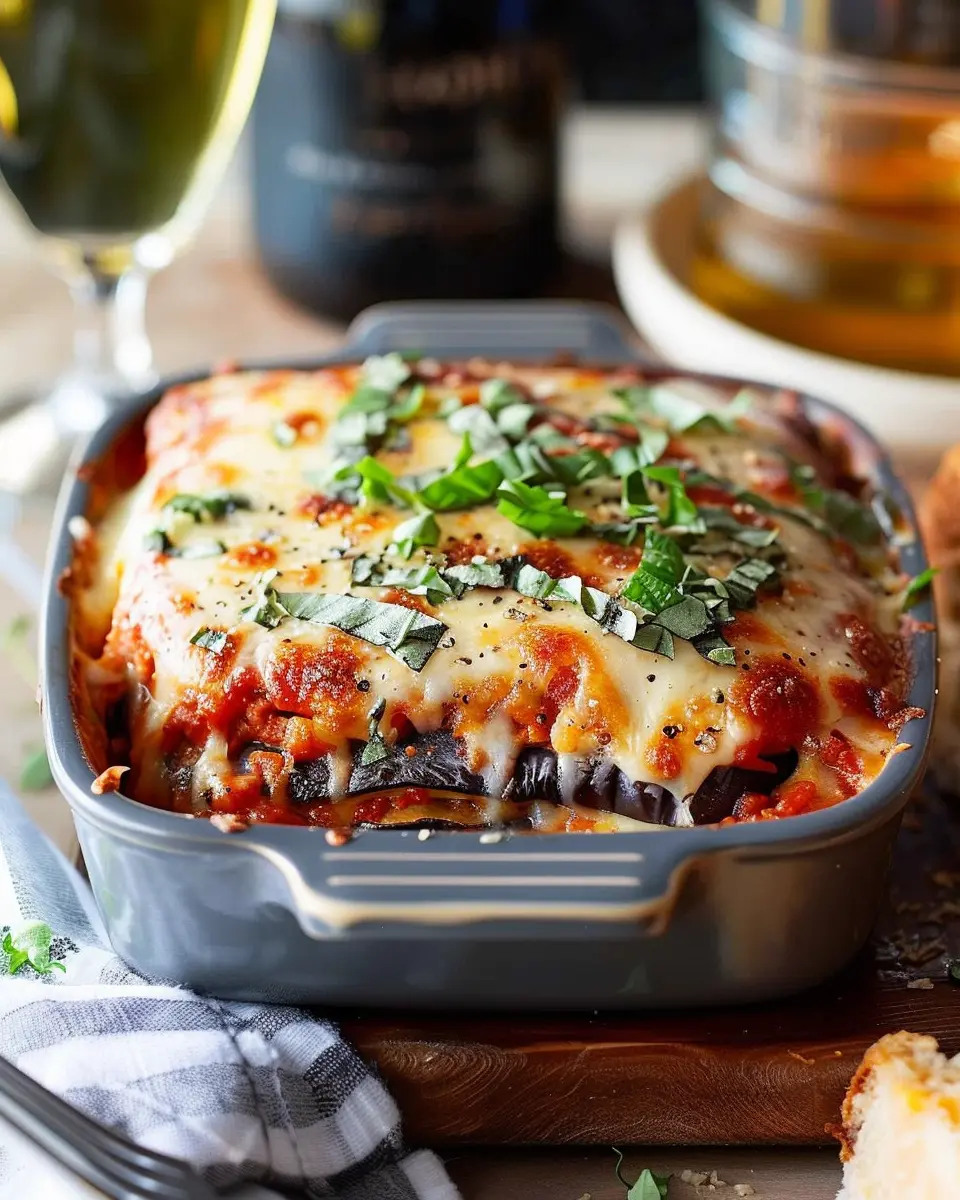Introduction to the Best White Bread
Homemade white bread is more than just a kitchen project; it’s a culinary game changer, especially for young professionals who juggle busy schedules and seek comfort food that’s both nourishing and satisfying. Imagine this: a warm, crusty loaf fresh out of the oven, filling your home with an irresistible aroma. There’s something incredibly rewarding about creating the best white bread from scratch, and it’s easier than you might think.
Why Homemade White Bread is a Game Changer for Young Professionals
Let’s face it: the grind of everyday life can leave little time for cooking, but having a reliable white bread recipe in your repertoire can turn your dinner plans around. Not only does homemade bread taste infinitely better than store-bought, but it also allows you to skip the preservatives and additives that often sneak into mass-produced products. Plus, making your own bread is a great way to save some money—those artisan loaves can get pricey!
Here are a few compelling reasons why you should dive into this delightful kitchen endeavor:
- Healthier Ingredients: Unlike commercial brands, you control every ingredient. Whole grain flours, quality fats, and no artificial preservatives make all the difference.
- Customization: Want to add herbs, garlic, or other flavor enhancers? Go for it! The best white bread is what you make it.
- Freshness: Nothing beats that first bite of warm bread, especially when slathered in butter or topped with turkey bacon and avocado.
Imagine having a fluffy slice of fresh bread ready to elevate your weekend brunch or weekday sandwich. Perhaps you’d want to pair it with a homemade soup or create a thriving avocados on toast masterpiece. Both options are perfect with your very own creation.
For those interested in some baking science, the process of making bread involves fascinating chemistry. According to experts at King Arthur Baking, understanding yeast and gluten development can significantly enhance your baking skills.
So, are you ready to embark on this baking adventure? Let’s preheat that oven and dive into what makes the best white bread truly special.
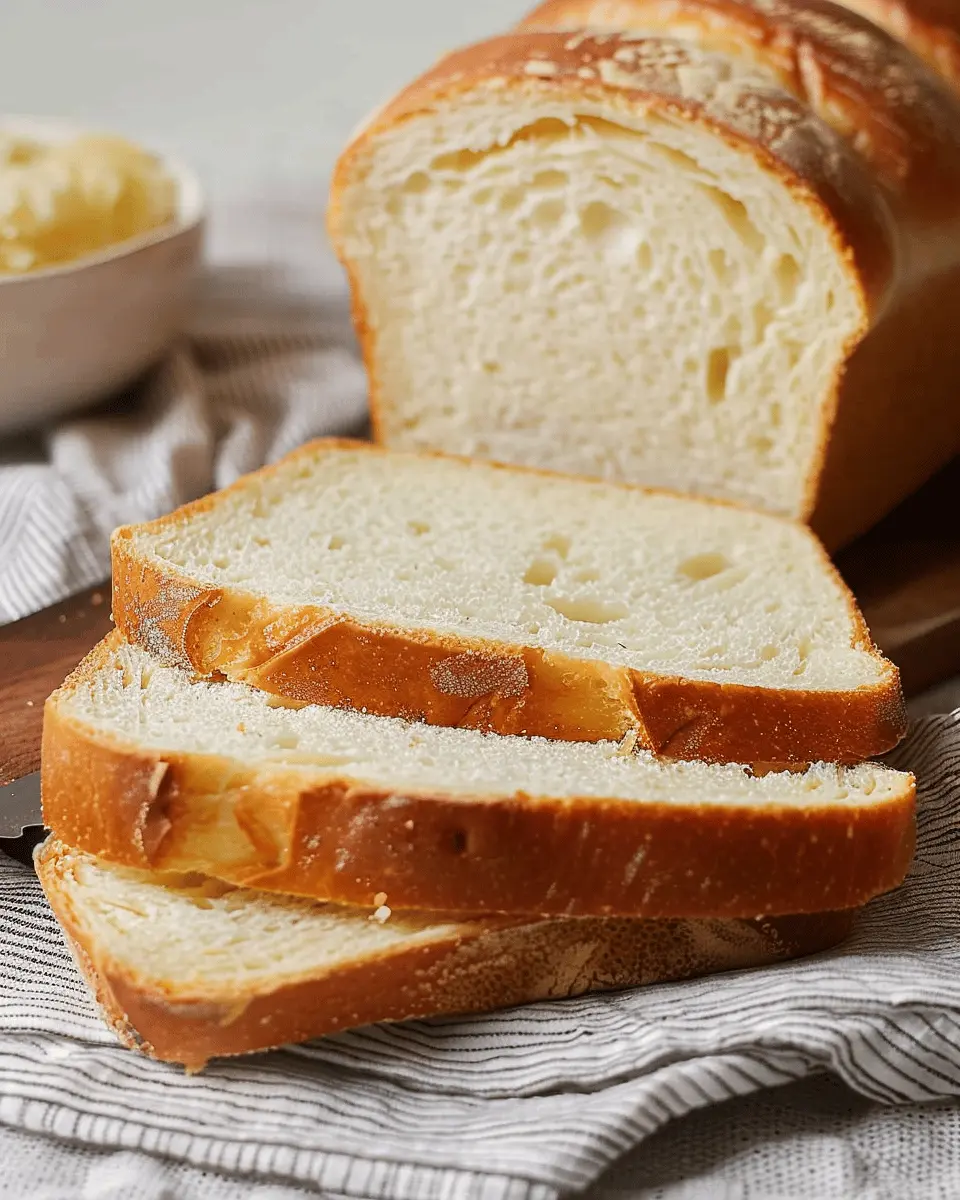
Ingredients for the Best White Bread
Essential ingredients for a perfect loaf
When it comes to creating the best white bread, the right ingredients can make all the difference. Here’s what you’ll need:
- All-purpose flour: This is your base and gives the bread its structure.
- Water: Warm water, around 110°F, activates the yeast, making it super important.
- Sugar: A small amount feeds the yeast and adds a touch of sweetness.
- Salt: For flavor, but also improves gluten strength.
- Yeast: Instant or active dry yeast works wonders for that fluffy texture.
- Butter: Adds richness and helps with the crumb structure.
These essentials come together to form a delicious loaf that’s hard to resist.
Optional ingredients for flavor enhancement
Want to elevate your bread? Consider adding:
- Milk: For a softer crust and slightly sweet flavor.
- Eggs: Enhances richness, making your loaf even more decadent.
- Herbs and spices: Try a sprinkle of garlic powder or dried rosemary for a unique twist.
Adding these can take your best white bread to another level, and who doesn’t love a little extra flavor?
Step-by-Step Preparation for the Best White Bread
Making your own bread at home is not only a rewarding experience but also fills your kitchen with a warm, inviting aroma. For those who want to impress friends or simply enjoy a slice of fresh bread, here’s a step-by-step guide to whipping up the best white bread. Let’s dive in!
Gather all ingredients
Before you start, it’s essential to have everything ready. Here’s what you’ll need for this simple yet delicious recipe:
- Flour: 4 cups of all-purpose or bread flour
- Warm water: About 1 ½ cups (about 110°F)
- Sugar: 2 tablespoons (helps to feed the yeast)
- Instant yeast: 2 ¼ teaspoons (or one packet)
- Salt: 1 ½ teaspoons
- Oil: 2 tablespoons (vegetable or olive oil works well)
Tip: Fresh ingredients yield the best results, so check those expiration dates, especially on your yeast.
Proof the yeast with warm water and sugar
In a large mixing bowl, combine the warm water, sugar, and yeast. Let it sit for about 5-10 minutes until it becomes frothy. This step is critical as it ensures that the yeast is active and ready to make your bread rise perfectly. If you’re uncertain about your yeast’s vitality, this simple proofing test is a great way to check!
Mix in oil and salt
Once you see the bubbles forming, add the oil and salt to the mixture. Oil enriches the bread’s flavor, while salt not only enhances taste but also helps control the fermentation process. Stir until combined; the mixture will start to become more homogenous.
Gradually incorporate the bread flour
Now, it’s time to add the flour. Slowly stir in the flour, one cup at a time, making sure everything is well mixed after each addition. You want the dough to pull away from the sides of the bowl but still remain slightly sticky.
Knead the dough until smooth
Flour a clean surface and turn your dough out onto it. Knead the dough for about 8-10 minutes. To knead, fold it over itself, push it down, and turn it. This process develops the gluten, which gives your bread that desirable chewy texture.
Fun fact: Kneading is an excellent way to relieve stress—trust me, your future loaf will thank you!
Allow the dough to rise in a warm place
Place the kneaded dough in a lightly oiled bowl, cover it with a damp cloth or plastic wrap, and put it in a warm spot (like your oven with just the light on). Let it rise for about 1 hour or until it doubles in size. This rising period is essential for achieving loftiness in your best white bread.
Punch down and shape the loaves
Once your dough has risen, gently punch it down to release excess air. Then, turn it out onto your floured surface, and divide it into two equal pieces. Shape these pieces into loaf forms and place them into greased loaf pans.
Second rise in loaf pans
Cover the loaves again, allowing them to rise for another 30-40 minutes until they double in size. You might notice that they have filled out the pans beautifully!
Bake the loaves until golden brown
Preheat your oven to 350°F. Bake the loaves for 25-30 minutes or until they are golden brown and sound hollow when tapped. A cooking thermometer inserted into the bottom should read 190°F.
Pro tip: If you’re uncertain, a toothpick can also help test doneness. If it comes out clean, you’re good to go.
Let cool and enjoy
Once baked, remove the loaves from the pans and let them cool on a wire rack. This cooling step is crucial, as it allows the steam to escape, preventing sogginess. Slicing into warm bread is tempting, but a little patience will reward you later!
Now that you’ve mastered this simple and delightful recipe, why not experiment with toppings? Pair your fresh best white bread with some delicious spreads or even stack it up with turkey bacon and chicken ham for a satisfying sandwich.
Hope this guide encourages you to create your best white bread yet! Enjoy the process and the delicious results!
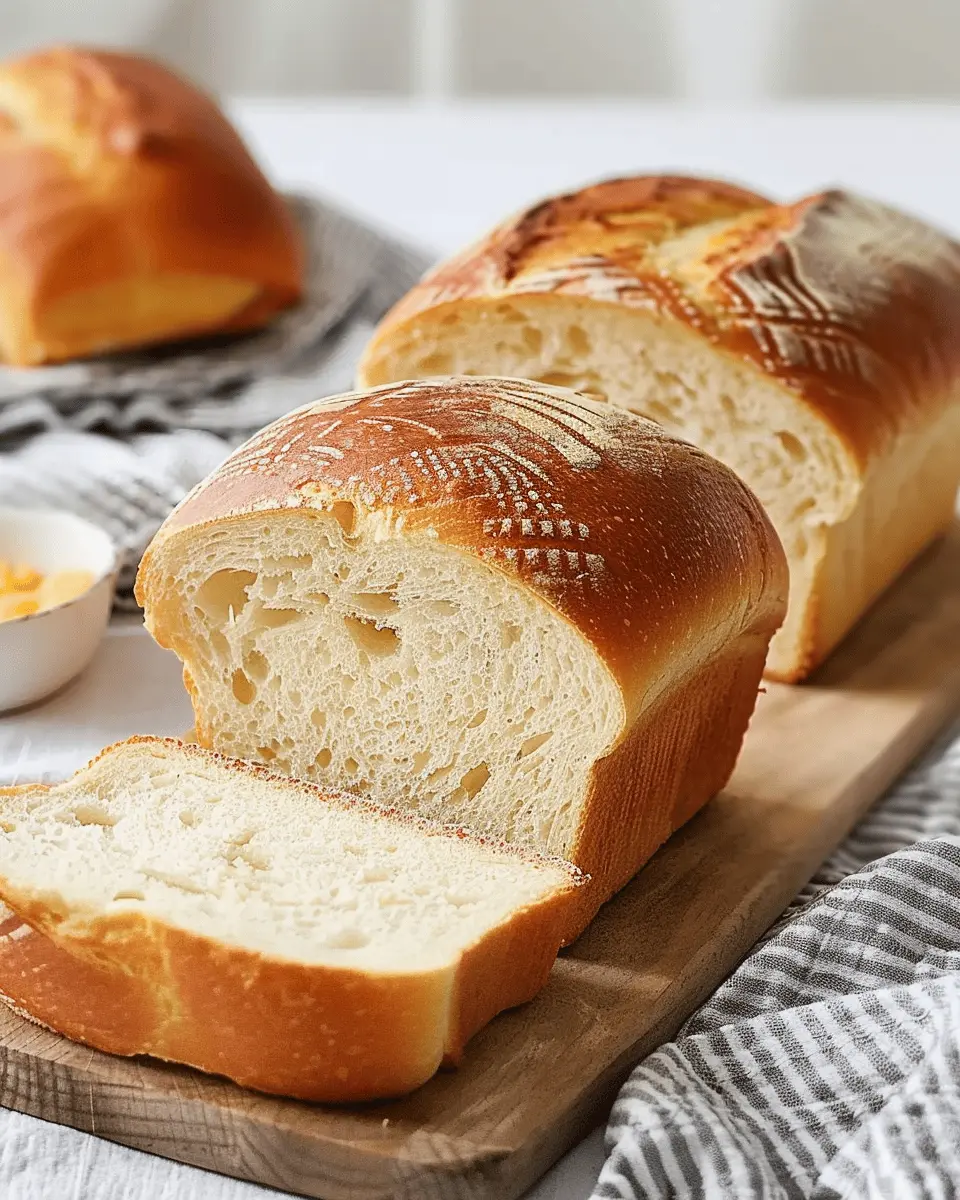
Variations on the Best White Bread
When it comes to baking the best white bread, the traditional recipe is just the beginning. Let’s explore some delightful variations that can easily elevate your loaf game.
Whole Wheat White Bread
For a healthier twist, consider incorporating whole wheat flour into your white bread. This creates a heartier texture while still retaining that classic white bread flavor. A common ratio is to mix 50% all-purpose flour with 50% whole wheat flour. This not only boosts the nutritional value but also adds a subtle nutty flavor that many find irresistible. Plus, whole grains are a fantastic source of fiber, helping you feel fuller for longer. If you’re looking for guidance on switching to whole grains, the Whole Grains Council provides excellent resources on how to make the transition smoothly.
Herb-Infused White Bread
If you crave something a little more aromatic, try adding fresh herbs to your dough. Rosemary, thyme, or even basil can take your best white bread to the next level. Simply chop your chosen herbs finely and mix them in during the kneading phase. This not only makes for a fragrant aroma as it bakes but also adds a delightful taste that pairs wonderfully with turkey bacon sandwiches or even as a base for garlic bread.
White Bread with Seeds
For an added crunch and nutritional boost, why not sprinkle some seeds into your dough? Sunflower seeds, chia seeds, or sesame seeds are fantastic options. They not only enhance texture but also provide healthy fats and proteins. You can either mix them into the dough or sprinkle them on top before baking for a beautiful finish. To learn more about the health benefits of these seeds, check out the resources available from the American Heart Association.
Incorporating these variations into your routine will keep your best white bread creation fresh and exciting! So, which one will you try first?
Cooking Tips and Notes for the Best White Bread
Common pitfalls and how to avoid them
Making the best white bread at home can be incredibly satisfying, but a few common errors can lead to disappointment. One pitfall is using water that’s too hot or too cold, which can affect yeast activity. Always aim for a temperature around 110°F; a kitchen thermometer can be a handy tool here. Additionally, overworking the dough can result in a dense loaf. Mix just until combined, and then let the dough rise to enhance its texture.
Storing your homemade bread for freshness
After you’ve crafted this delightful bread, proper storage is key to maintaining its freshness. Avoid storing it in the fridge, as this can lead to staling more quickly. Instead, wrap your loaf in parchment paper and store it at room temperature in a bread box or a paper bag. If you want to keep it even longer, consider slicing and freezing it in airtight bags—just thaw slices as needed for the freshest experience!
For more insights and tips on bread-making, check out King Arthur Baking or other reputable cooking resources!
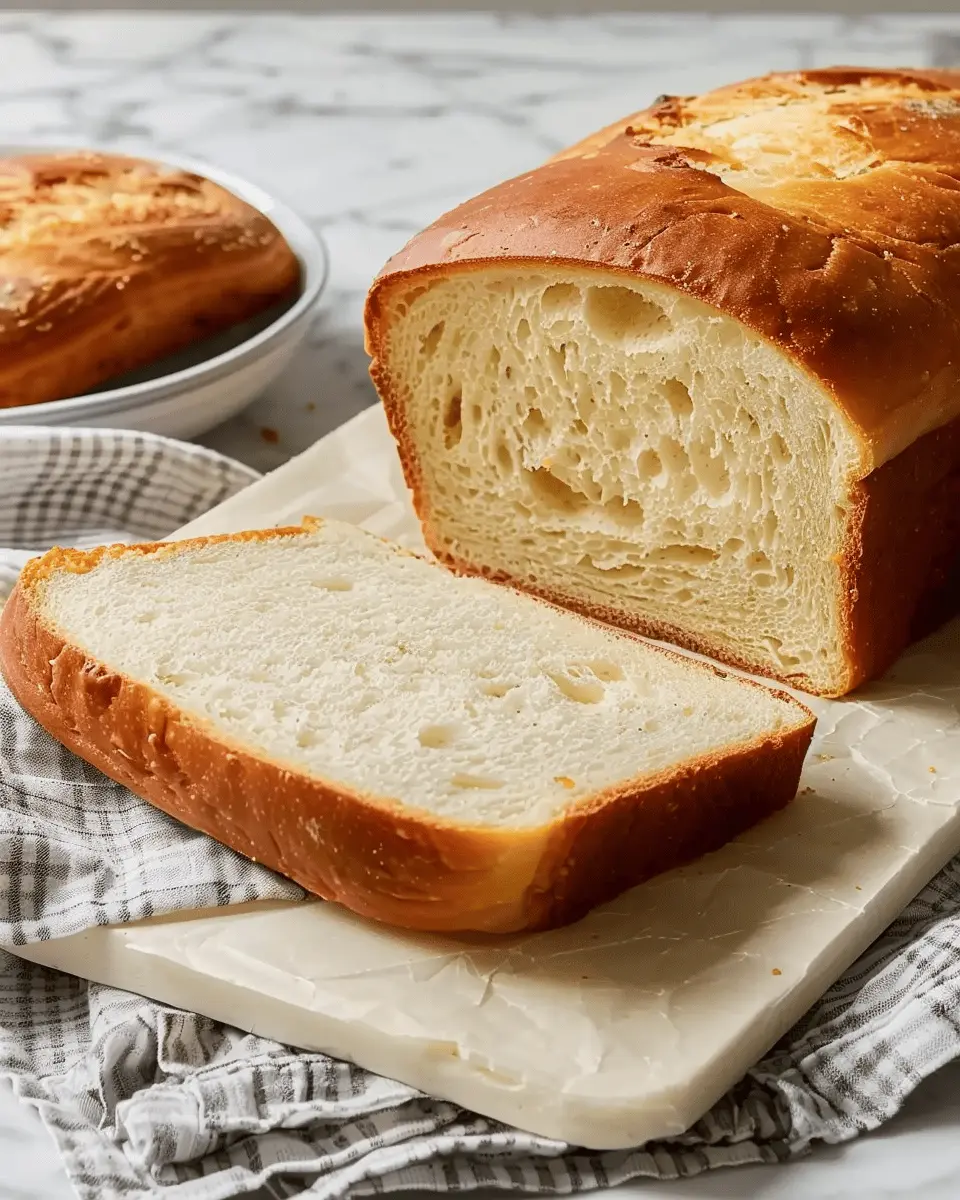
Serving Suggestions for the Best White Bread
Perfect pairings for sandwiches
When it comes to the best white bread, nothing beats a good sandwich. The fluffy texture and subtle flavor of freshly baked white bread make it the perfect canvas for a variety of fillings. Try layering slices of turkey bacon, ripe tomatoes, and crisp lettuce for a delightful twist on a classic BLT. Alternatively, consider a classic chicken ham and avocado pairing for a protein-packed lunch that’s sure to keep you full. Don’t forget to spread a thin layer of your favorite condiment — a bit of mayonnaise or mustard can elevate your sandwich to gourmet status!
Creative ways to enjoy homemade bread with soups
If you’re looking for a comforting meal, nothing pairs better with a hearty soup than slices of best white bread. Consider enjoying your warm, crusty bread dipped into creamy tomato soup or alongside a savory beef stew. The bread soaks up the flavors beautifully and adds a delightful texture. For a fun twist, try toasting your bread and crafting croutons to sprinkle on top of your soups — a little crunch never hurts!
These delicious serving suggestions will transform your homemade bread into a versatile staple in your kitchen! For more ideas, check out Food Network or Serious Eats to inspire your next meal.
Time Breakdown for the Best White Bread
Preparation Time
Making the best white bread from scratch starts with a straightforward preparation time of about 15 minutes. You’ll gather your ingredients and mix them until they’re well combined. This initial step sets the stage for deliciousness!
Rising Time
The magic happens during the rising time, which takes around 1 to 2 hours. This is when the dough ferments and expands, allowing those gluten strands to work their wonders. Trust the process—it’s essential for a fluffy loaf.
Baking Time
When it comes to baking, you’ll want to dedicate about 30 minutes. Preheat your oven properly to achieve that perfect golden crust, ensuring your best white bread emerges beautifully baked.
Total Time
In total, you’re looking at approximately 2 to 3 hours from start to finish. This includes mixing, rising, and baking. Just think of the incredible aroma wafting through your home as you await your warm, homemade bread! For more on time management in the kitchen, check out this helpful guide.
This process not only nourishes the body but also offers a wonderful opportunity to practice mindfulness while you wait for your delicious creation!
Nutritional Facts for the Best White Bread
When diving into the world of homemade bread, it’s not just about the heavenly aroma and soft texture; knowing its nutritional profile is equally important. Here’s what you can expect from a slice of the best white bread.
Calories per slice
Each slice contains approximately 80-100 calories, making it a convenient choice for sandwiches or toast without adding too many extra calories to your meal.
Carbohydrates and protein content
This delightful bread packs around 15-20 grams of carbohydrates per slice, offering that quick energy boost we often need. With about 2-3 grams of protein, it’s a decent sidekick to help you power through your day.
Sodium level
A typical slice of best white bread generally has around 130-200 mg of sodium. While this is moderate, it’s a good idea to keep an eye out and balance it with lower-sodium toppings or spreads.
For more detailed nutritional insights, you can check out resources like the USDA FoodData Central or NutritionData.
When enjoying this homemade treat, remember that it’s all about balance. Pair it with wholesome ingredients for a complete meal that not only fills you up but fuels your body!
FAQs About the Best White Bread
What makes homemade white bread healthier than store-bought?
Homemade white bread often outshines its store-bought counterparts in several ways. For starters, you control the ingredients. Many commercial breads contain preservatives and additives that can make them less healthy. By making the best white bread from scratch, you can choose organic flour, limit sugar, and avoid unnecessary fillers. Plus, fresh bread is free from artificial ingredients that might compromise quality and health.
Additionally, baking your own bread allows you to tailor it to your dietary needs, whether that means reducing sodium for heart health or incorporating seeds for added nutrition. If you’re curious about the benefits of going homemade, check out this article on the health benefits of baking your own bread.
Can I use whole wheat flour instead of bread flour?
Great question! While you can substitute whole wheat flour in your bread recipe, it may alter the texture. Whole wheat flour contains more bran and germ, making it denser and giving your bread a heartier flavor. If you want the best of both worlds, consider blending whole wheat flour with bread flour. This combo gives you the nutritional benefits of whole grains while keeping that light, airy texture you crave in white bread.
How do I know when the bread is fully baked?
Perfectly baked bread should have a golden-brown crust and sound hollow when tapped on the bottom. If you have a food thermometer handy, stick it in the center of the loaf—it should read about 190°F (88°C) when done. If you’re still unsure, don’t hesitate to check out this comprehensive guide on baking bread.
Making the best white bread doesn’t have to be daunting. With these tips, you’ll be on your way to enjoying fresh, delicious bread straight from your oven. Happy baking!
Conclusion on the Best White Bread
Baking your own bread can transform an ordinary day into something special. The best white bread recipe is not just about ingredients; it’s about the joy of creating something delicious from scratch. As you knead the dough and let it rise, you’ll experience a connection to the simple pleasures of cooking.
There’s nothing like the aroma of freshly baked bread filling your home, inviting everyone to gather around. Slice into your warm loaf, and you’ll see that the effort is well worth it. So, roll up your sleeves and start baking your own best white bread today. You might just find it becomes a beloved tradition. For more tips on bread-making, check out the resources from the King Arthur Baking Company.
PrintBest White Bread: A Simple and Delicious Recipe from Scratch
The Best White Bread from Scratch: A Simple, Delicious Fresh Bread Recipe
- Prep Time: 15 minutes
- Cook Time: 35 minutes
- Total Time: 2 hours
- Yield: 1 loaf 1x
- Category: bread
- Method: baking
- Cuisine: American
- Diet: vegetarian
Ingredients
- 4 cups all-purpose flour
- 1 packet active dry yeast
- 2 tablespoons sugar
- 2 teaspoons salt
- 1 ½ cups warm water
- 2 tablespoons butter
Instructions
- In a large bowl, combine warm water, yeast, and sugar. Let it sit until foamy.
- Add flour, salt, and melted butter. Mix until a dough forms.
- Knead the dough on a floured surface for 8-10 minutes.
- Place dough in a greased bowl, cover, and let rise until doubled in size.
- Punch down the dough and shape it into a loaf.
- Place in a greased loaf pan and let it rise again.
- Bake at 350°F (175°C) for 30-35 minutes or until golden brown.
- Cool on a wire rack before slicing.
Notes
- For best results, use fresh yeast.
- Store bread in an airtight container to keep it fresh.
Nutrition
- Serving Size: 1 slice
- Calories: 120
- Sugar: 1g
- Sodium: 150mg
- Fat: 2g
- Saturated Fat: 1g
- Unsaturated Fat: 0g
- Trans Fat: 0g
- Carbohydrates: 23g
- Fiber: 1g
- Protein: 4g
- Cholesterol: 5mg
Keywords: white bread, fresh bread, homemade bread
